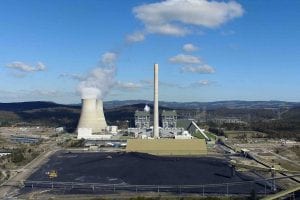Those within the Government that pushed to dump a scheme to reduce the emissions intensity of our electricity sector were very clear about why – keeping electricity prices low and power supplies secure. The problem is that they’re not actually helping the situation, as it appears the Chief Scientist, Alan Finkel, has concluded in his review of energy security.
While leader of the Liberal Party, Tony Abbott argued the imposition of the carbon price would be a disaster for the economy by massively increasing electricity prices. Yet, as shown in the table below, the market is now pricing wholesale electricity contracts for next year at levels higher than what prevailed when the carbon price was in place.
Power prices are higher now than when the carbon price was in place (per MWh)

It’s understandable why Liberal-National MPs are concerned about measures to phase out coal for less emissions intensive alternatives. Coal is a very cheap fuel in this country and helps supply very reliable electricity. Fed into one of Australia’s existing coal power stations incurs an operating cost of about $10 to $25 per megawatt-hour of electricity. That’s really cheap by international standards.
The problem is that these coal power stations are beginning to age. To keep operating safely and reliably a number of the stations and mines will need significant refurbishment. That requires money, not nearly as much as building a new coal fired power station which costs billions, but still in the realm of a hundred million dollars or so.
Now a significant number of federal Liberal-National MPs (but not all) may happen to think human-induced climate change is a hoax. But they are having trouble convincing investors to place large bets on them winning the day, when just about every G20 nation’s meteorological agency and academy of science say climate change is real.
In recent months one of the largest power generating companies in Australia – Engie – decided that it was wiser to side with the meteorologists than Cory Bernardi. They elected to close the large Hazelwood power station even though it’s cost of fuel is well below the going market price of electricity. The reason came down to the fact that the French head office had decided on a global basis that they no longer wanted to tie-up capital in a sector that was in decline – fossil fuels. Specifically in relation to Hazelwood, which is almost 50 years old, Engie was facing a major bill to bring the plant up to reasonable safety standards, following a mine fire that burnt for 45 days.
This follows on from other aging coal plant closures in the last few years including Anglesea -commissioned in 1969; Playford -commissioned in 1963; and Northern -commissioned in 1985, but reliant on the same coal mine that served Playford since 1963. In addition AGL has said that in 2022 they expect to close the Liddell coal-fired power station – commissioned in 1971.
Financiers just aren’t interested in throwing perfectly good money into old, polluting assets with highly questionable futures. So we need to work out what to replace them with.
Nuclear is unfortunately too expensive and would take too long to roll-out.
Gas is part of the answer, but thanks to the establishment of plants in Gladstone to liquefy and export gas to Asia, we now have to pay double the price for it that we used to. This means we’d need to see prices for power approaching $100 per megawatt-hour to induce new plants to be built.
This then leaves renewable energy. What many people don’t realise is that over the last five years there has been considerable technological progress that means wind and solar are now noticeably cheaper than new gas or coal plant. Yes their power varies depending on the sun and the wind, which means we’ll continue to also rely on the other existing fossil fuel power plants too. But we’ll need a lot less gas and therefore minimise its considerable cost.
And it’s here where these Liberal-National MPs are really undermining their own objective of containing rises in power prices. If we look overseas to places like Mexico, Chile, the United States and the Middle East we find contracts are being written for power from wind and solar projects at prices of around $50 to $60 per megawatt-hour. Meanwhile in Australia prices are closer to $80-$100.
Michael Liebreich, founder of Bloomberg’s New Energy Finance division and a leading global expert on power economics, points out that that Australia’s wind and solar resources are some of the best in the world. So this can’t be the reason we pay more. Our labour costs are a bit higher, but when you look at recent construction cost data we’re pretty close to the US.
So why are we paying so much more for renewable energy?
It’s mainly down to the fact that financiers see Australia as a much more risky place for investment in renewable energy. This means they charge much higher interest rates to Australian projects. Financiers see it as more risky because Australia’s regulatory environment is too uncertain and not aligned with government’s emission reduction targets. It also doesn’t help that every second day a government MP publicly accuses renewable energy as responsible for a range of ills, including even children drowning!
Our Prime Minister and Energy Minister know all this. Their advisers are telling them. Industry is telling them. Unfortunately it seems their colleagues don’t know it, or aren’t willing to listen.
Tristan Edis is Director – Analysis & Advisory at Green Energy Markets.
Follow on Twitter @TristanEdis







